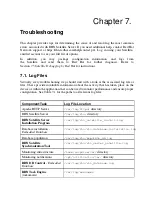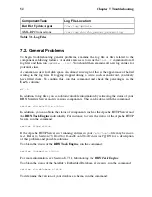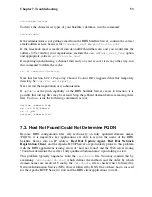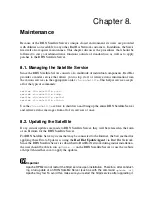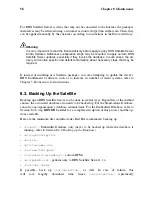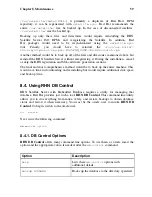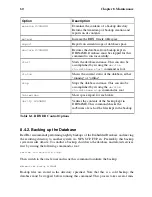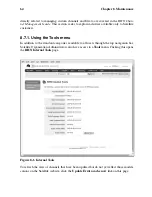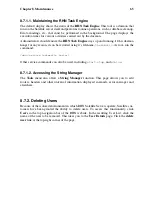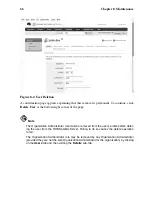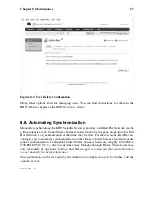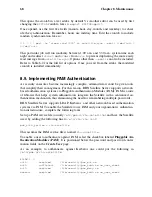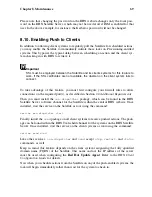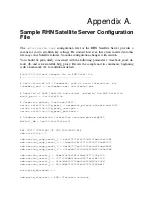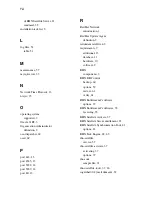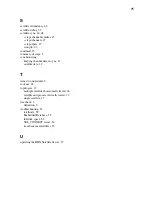
Chapter 8. Maintenance
63
If your original SSL certificate does not take your high-availability solution into
account, you may create a new one with a more appropriate Common Name value
now. In this case, you may also generate a new bootstrap script that captures this new
value.
3. After installation, copy the following files from the primary Satellite to the secondary
Satellite:
•
/etc/rhn/rhn.conf
•
/etc/tnsnames.ora
•
/var/www/rhns/server/secret/rhnSecret.py
4. Copy and install the server-side SSL certificate RPMs from the primary Satellite to
the secondary. Refer to the Sharing Certificates section of the
RHN Client Config-
uration Guide
for precise instructions. Remember, the Common Name value must
represent the combined Satellite solution, not a single machine’s hostname.
If you generated a new SSL certificate during Satellite installation that included a
new Common Name value, copy the SSL certificate RPMs from the secondary to
the primary Satellite and redistribute the client-side certificate. If you also created
another bootstrap script, you may use this to install the certificate on client systems.
5. If you did not create a new bootstrap script, copy the contents of
/var/www/html/pub/bootstrap/
from the primary Satellite to the secondary. If
you did generate a new one, copy that directory’s contents to the primary Satellite.
6. Turn off the
RHN Task Engine
on the secondary Satellite with the following com-
mand:
/sbin/service taskomatic stop
You may use custom scripting or other means to establish automatic start-up/failover
of the
RHN Task Engine
on the secondary Satellite. Regardless, it will need to be
started upon failover.
7. Share channel package data (by default located in
/var/satellite
) between the
Satellites over some type of networked storage device. This eliminates data replica-
tion and ensures a consistent store of data for each Satellite.
8. Make the various Satellites available on your network via Common Name and a
method suiting your infrastructure. Options include round-robin DNS, a network
load balancer, and a reverse-proxy setup.
8.7. Conducting Satellite-Specific Tasks
Using a RHN Satellite Server is quite similar to using the hosted version of Red Hat Net-
work. For this reason, you should consult the
RHN Reference Guide
to obtain detailed in-
structions to standard tasks, such as editing System Profiles and updating packages. Tasks
Summary of Contents for NETWORK SATELLITE SERVER 4.1.0
Page 1: ...RHN Satellite Server 4 1 0 Installation Guide...
Page 12: ...8 Chapter 1 Introduction...
Page 20: ...16 Chapter 2 Requirements...
Page 24: ...20 Chapter 3 Example Topologies Figure 3 3 Satellite Proxy Vertically Tiered Topology...
Page 38: ...34 Chapter 4 Installation...
Page 54: ...50 Chapter 6 Importing and Synchronizing...
Page 74: ...70 Chapter 8 Maintenance...
Page 80: ......



